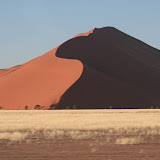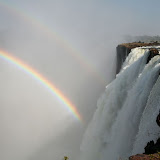After relaxing in Zanzibar, we landed in mainland Tanzania for quick safari trip to Ngorongoro Crater, but not before first visiting a nearby village of Ng'iresi for a glimpse into the lifestyle of the semi-nomadic Tanzanian Maasai. It was just amazing.
For photos, click here.
Kimberly
For this portion of our trip, we had pre-booked everything with a safari operator. Yes, you can just show up and hope to find something...but that something may be really shoddy-and in August, there may be nothing available. And it is just a better idea to book your safari through a reputable operator. Should anyone be planning a trip to Africa, I cannot highly recommend our safari company and travel agent enough. They were both invaluable. In Tanzania, we booked with Roy's Safaris(http://www.roysafaris.com/), who provided us with a private car and driver (something we realized definitely had spoiled us when we arrived in Kenya right afterwards), took us on guided safaris and visits, and booked our lodging and food. It was certainly not cheap, but probably half the price of the "safari" packages most people book...and the quality was amazing. We booked both this safari and our Kenyan one through a travel agent in the U.S. named Susan Wood. http://www.awaytoafricasafaris.com/) She provided an incredible amount of support and guidance: from articles on the Crater and Wildebeest Migration, to tips on what to pack, to advising us on how to get our passports back from the Kenyan Embassy (who had seemed to have taken them hostage just before our trip!).
After arriving in Arusha, we met our guide, Thomas, who took us to the village of Ng'iresi for a cultural visit. Set on the slopes of Mt. Meru, near Kilimanjaro, the village is home to a group of semi-nomadic Maasi...meaning that they no longer wander the country with herds of hundreds of cattle (used for dowries) and now work primarily in agriculture. We were quite surprised at the incredibly lush landscape--it looked just like the coffee and banana plantations I had visited in Honduras...I had to keep reminding myself we were in Africa. We first met with person who runs the project, who explained how all the proceeds from the "cultural tourism" program go into the community to build schools. Robert, a village resident showed us around, first taking us to the school that was built with the first proceeds of the program. We had the opportunity to meet with a teacher and ask him about the curriculum at the school. We also talked with a few students who were studying for the big test that allows entrance to secondary school. Afterward, we visited a family's home, which was actually a circular hut with a metal roof. The mother and her three daughters all sleep in one smoky room. Her two sons that have already gone through the right/ritual of circumcision live in a brick hut next door. In many ways it felt similar to the villages we had visited in Sapa in Northern Vietnam, but somehow more peaceful and tranquil.
After a good night's sleep at the Impala Hotel, we were awoken to a lone man answering the 5am call to prayer. It was really quite beautiful, if not a bit startling of a wake-up call. We rose for an early breakfast as we had a pretty long drive ahead of us to Ngorongoro Crater. All along the road we saw different Maasai settlements and many nomadic Maasai herding their cattle. We tried to snap some photos, but at 100 km/hour it was a bit challenging.
Ngorongoro Crater is often described as one of the natural "wonders of the world"--and I have to agree. It is simply breathtaking. Much larger than I had imagined, the caldera measures 10-12 miles across and has an area of 102 miles sq. The rim, which rises a whopping 2,000 feet, is comprised of surprisingly dense forest and usually is hugged by a misty fog. As we drove into the crater and reached the floor, the fog lifted, and it was suddenly was warm and bright...and then we saw the animals: hundreds of them. Zebra, Wildebeest, Cape Buffalo, Grant's & Thompson's Gazelles, Warthogs, and many birds, all grazing together in an open pastures. The concentration of wildlife was just staggering. It is estimated that there are over 10,000 wildebeest and 5,000 zebra in the crater alone! Take the number of animals we photographed in Kruger, South Africa...I think there were at least 10-20 times as many animals that we did NOT photograph in Ngorongoro!
The crater floor supposedly has the densest concentration of predators in Africa...and from our experience, we can't argue with that statement! In two drives we saw three different entire prides of lions...and some of them more than once! One of the highlights was watching a pride of lions sleeping only a few meters away from our Landrover. All the adults were fast asleep, but two little cubs were up and hungry. We sat and watched them feed, going around from one lioness to another (It's apparently quite common for lionesses to nurse others' young in the same pride--they share the responsibility.) And then there was yet another pride of lions that barely woke from their afternoon nap to lazily watch an entire herd of Cape Buffalo cross their path. We kept hoping for some National Geographic-worthy footage of a lion hunt, but they had apparently feasted enough the night before.
We stayed just on the edge of the crater at the Ngorongoro Sopa Lodge. All the hotel rooms are these enormous individual "huts" with large windows overlooking the crater. At night time we took our flashlight and shined it outside to see if we had any visitors and were surprised to find the reflection of the light on an animal's eyes not to far away. The continual crying and howling gave us the clue that our visitor was a hyena...that was enough to keep us inside!
In the morning, we took another game drive on the floor of the crater. Again, we saw hundreds of animals: lions, zebra, buffalo, jackals, hyenas eating their early morning snack.... The real treat of the day was just before we left though. It is actually rather uncommon to find entire herds of elephants in the crater, usually just a few old bull elephants live on the crater floor all alone. So it was an amazing treat to see a whole pack of elephants walking along the crater wall in a single file line. There were two baby elephants who would keep up with the rest of the group by holding onto the adults' tails with their trunks!
Our time was made even more memorable by the great rapport we developed with our guide, Thomas. He was incredibly knowledgeable about both Tanzania and all the wildlife. But more, he was wonderfully personable. On the drive back to Arusha we talked about our recent marriage on our hopes for the future. He shared with us his personal story, about how grew up in Kilimanjaro and why he had become a guide. He even told us about the hardship he faced last year when his wife suffered an eptopic pregnancy. They were planning to try again this year and hoping to start a family soon. We really hope the best for them, as Thomas was a wonderful ambassador to such a beautiful country.





